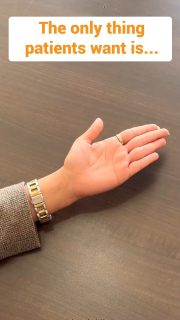As a manager, you want to do right by your employees and support them through intense work periods so they don’t get burned out. But this can be a challenge when you’re feeling overly stressed yourself. How can you take care of yourself so that you have the time and energy to support your team? What steps do you need to take to reduce your stress level? And what actions can you take to improve your team members’ well-being?
What the Experts Say
It’s tough to find the energy you need to help others when you yourself are at your limits. Burnout — as opposed to more run-of-the-mill stress — can cause you to “feel utterly depleted,” says Susan David, a founder of the Harvard/McLean Institute of Coaching and author of Emotional Agility. And it “can permeate all aspects of your life. You are overtired and under-exercised; you’re not attentive to food and nutrition; and you’re disconnected from relationships.” But it’s not just you who suffers. “Your team is picking up on your stress, and it’s making everything worse,” says Whitney Johnson, the author of Build an A-Team: Play to Their Strengths and Lead Them Up the Learning Curve. So for the sake of both your health and the health of your employees, you need to summon all the resources you can to improve matters. Here’s how to do that.
Make your own health a priority
Before you can help your team members manage their stress, you need to manage your own. “Instead of hunkering down and concentrating” on your job, “you need to stop, look around, and figure out how you’re going to help your people get what they need,” says Johnson. A good starting point is to take care of your physical and mental health. Eat healthy, wholesome food; exercise regularly; get plenty of sleep at night; “try meditating, and find someone to vent to”— preferably “not your boss.” Taking care of yourself is not an indulgent luxury; it’s a matter of self-preservation. Johnson suggests sharing your tension-management techniques and rituals with your team. “Say, ‘here’s something I’m doing to manage the stress. This is how I cope.’”
Tackle the problem as a group
Even if you haven’t fully reigned in your stress, it’s helpful to demonstrate that you take the issue seriously. You can even suggest that you all take on self-care as a team — learning meditation as a group or sharing tips about what practices are working to reduce stress. You can make it a team goal to keep stress under control, says David. “Say to your team, ‘Even in the context of this change, how do we come together?’” This is helpful for the group but will also keep you accountable for taking care of yourself. Don’t force anyone into these activities though. A sense of autonomy can counteract the symptoms of burnout so you want people to feel they are making their own choices.
Exhibit compassion
Don’t be so hard on yourself or your team. “Burnout can often feel like a personal failing,” says David. But of course, that’s not true: We are all susceptible to it — and, in fact, our “environment precipitates” it. We are “living in an imperfect world, and yet we expect perfection.” Many organizations breed stress. “The ambiguity, the complexity,” not to mention the 24/7 nature of technology, leads many of us to feel “an extreme level of strain.” Be compassionate. Recognize, both inwardly and publicly, “that all of us are doing the best we can with the resources we have been given.” This doesn’t mean that you’re “lazy or letting yourself off the hook.” Rather, you’re “creating a psychologically safe place for yourself and others.” Johnson recommends talking your team through stressful periods in an honest but upbeat way. Yes, the workload is intense. And yes, big, high stakes projects are daunting. Tell your team, “‘We are in this together, and I know we can deliver.’”
Set a good example
You also need to “think about the [behaviors] you’re modeling” to your team, says David. “If you’re running from meeting to meeting and don’t have enough time in the day to breathe,” what message does that send? Set a good example by making downtime a priority. Show your team that you don’t always operate in full-throttle mode at the office. “Bring humanity back into the room,” she says. Johnson agrees. When “your people are completely overwhelmed,” you need to “encourage them to take regular breaks,” she says. “They need time to rest and rejuvenate and disconnect from work.” It’s also important to set limits on how much work encroaches on evenings and weekends. Whatever you do, “don’t send anyone on your team an email at midnight,” says Johnson. “You’re thinking, ‘I’ve got to get this out.’ But you’re also throwing a grenade into your employees’ peace of mind.” Instead, she recommends using Boomerang, or a similar program, that allows you to schedule emails.
Focus on the why
A common symptom (and cause) of job-related burnout is a “disconnect between a person’s values” and the work at hand, says David. “You feel stressed and tired, and yet you continue to work and work and work,” all the while forgetting what drew you to your career and organization in the first place. “It can be toxic.” As a leader, you need to “develop a shared sense of why” — as in, why are we driven to accomplish the mission? As a boss, it’s your job to galvanize your team. Remind them of the objective and why it’s important to the organization and your customers. When people have shared values and connection they are more likely to feel positively about their work.
Advocate for your team
If you and your team are suffering under a heavy workload, it might be time to ask your boss for a reprieve. It is your responsibility “to advocate for your team within the context of your organization’s goals,” says Johnson. She recommends talking to your boss about the effect stress is having on morale and performance. “Say, ‘My team is fully committed to this project, but people are tired. And we all know the law of diminishing returns.’” Convey the consequences of burnout and describe how it is in your boss’s best interest to take action. “There are going to be mistakes and slippage. And those will be costly.” Explain that you’re worried you might lose people who are valuable to the organization. Then ask, “can this deadline be pushed back? Or can this assignment be curtailed?” Think, too, about what you can “put in place within your team that can help,” says David. Perhaps certain meetings can be discarded or at least shortened. It’s “important that leaders go to bat” for their employees.
Be a source of optimism
Whenever work is frenzied and frantic, make a concerted effort to promote positivity, says Johnson. This is hard to do when you are stressed out but “look for the good,” she says. “Smile at people. And be kind.” Make sure you regularly acknowledge, recognize, and thank people for their efforts. “Say, ‘I notice you did X. Thank you. I appreciate it.’” Cultivate a feeling of community and social support. When your team hits a milestone or when a particular crunch time is over, celebrate. Acknowledge the accomplishments — yours and the team’s.
Principles to Remember
Do
-
Encourage your team to take regular breaks and seize opportunities to rejuvenate.
-
Support your team with inspiring language. Your message should be, “We are in this together.”
-
Go to bat for your team. If the workload is too heavy, ask your boss if deadlines can be moved or tasks reassigned.
Don’t
-
Neglect your health and well-being. Take good care of yourself and share your favorite stress-reducing strategies with your team.
-
Consider burnout a personal failing. Recognize, both inwardly and publicly, that people are doing the best they can with the resources they have.
-
Get bogged down in negativity. Be a source of optimism and try to cultivate positivity in the ranks.
Let’s talk about your business challenges today.
Our fresh perspectives, experience, and specialized skill sets will get your practice where you want it, and with far less stress.
https://hbr.org/2019/03/how-to-help-your-team-with-burnout-when-youre-burned-out-yourself




















